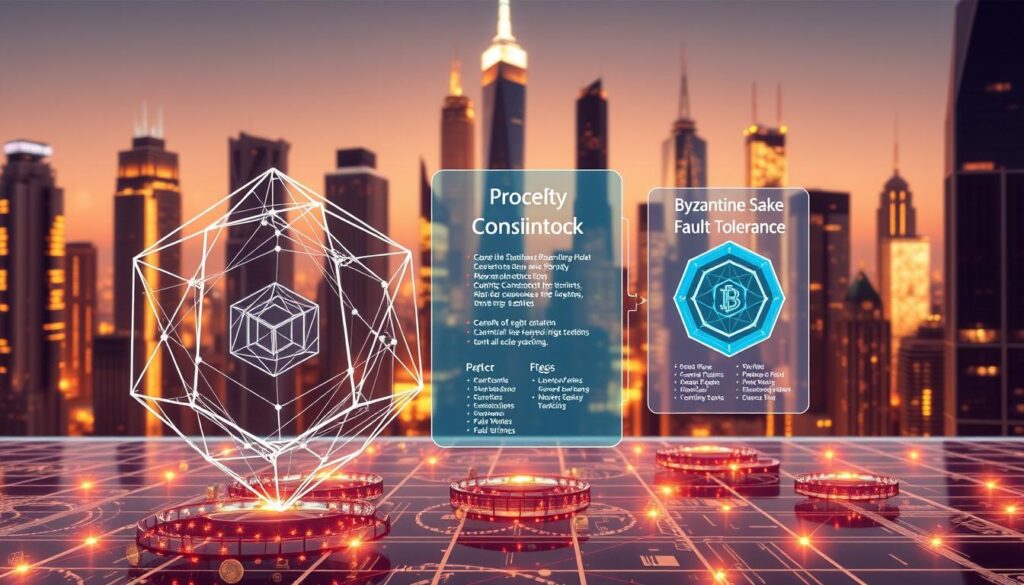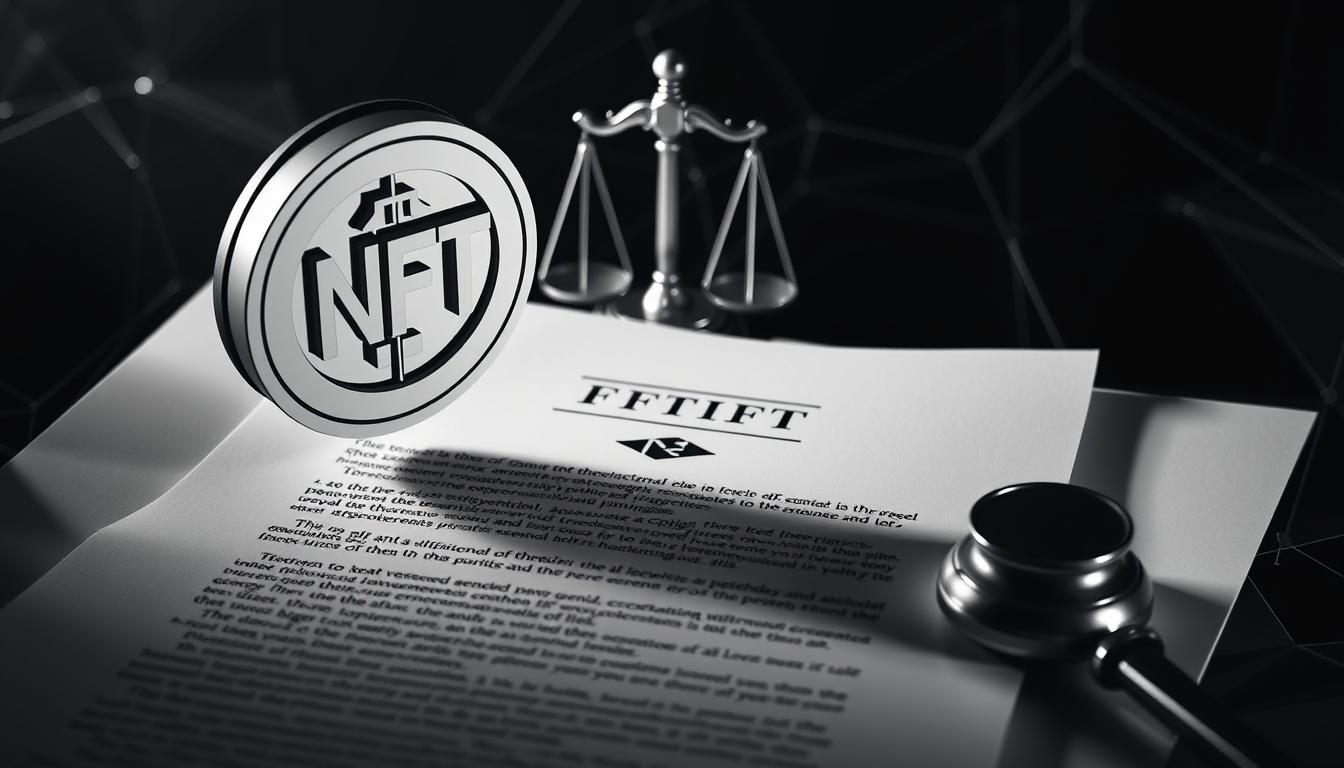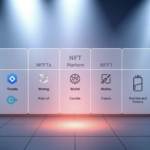Now Reading: Artificial Intelligence Blockchain Consensus Mechanisms Explained
- 01
Artificial Intelligence Blockchain Consensus Mechanisms Explained
Artificial Intelligence Blockchain Consensus Mechanisms Explained

This guide explains how modern protocols let distributed ledgers agree on a single source of truth without human checks.
Consensus systems replace slow, human verification with automated cryptographic steps that anchor trust and security at the protocol level. Early work by Satoshi Nakamoto, Moni Naor, Cynthia Dwork, Adam Back, and Nick Szabo set the stage for designs that verify data across many nodes.
We will cover core ideas: how agreement keeps data consistent, why PoW and PoS dominate, and how cutting-edge designs use machine learning and quantum resilience to tackle scale and cost.
This piece also frames why the topic matters in the United States. Tokenized assets, DeFi growth, and data-first apps demand systems that prevent double-spends, censorship, and tampering while balancing energy and performance.
Read on to learn the fundamentals, real-world projects, and the practical trade-offs you’ll need to weigh when evaluating protocols.
Key Takeaways
- Consensus is the core system that secures distributed ledgers and enforces a single source of truth.
- Agreement protocols ensure consistency of data across nodes and prevent tampering.
- PoW and PoS are common, but new designs aim for better scale, efficiency, and resilience.
- AI-driven optimization and quantum resistance are emerging trends to watch.
- Energy, cost, and security trade-offs shape protocol choice for U.S. markets and applications.
Why Consensus Mechanisms Matter in Blockchain and AI Today
Modern protocols move trust from people and institutions into code that enforces agreement across a network.
From human trust to cryptographic trust
In decentralized networks, rules and incentives replace a central referee. This shift means participants can validate data and transactions without trusting one party. Nodes run algorithms that check and record activity, keeping the ledger consistent and resistant to tampering.
Search-intent primer: what you’ll learn
This guide explains how different approaches validate transactions, align participant incentives, and protect network security. You will learn where common designs excel or fall short, and what trade-offs affect fees, throughput, and energy use.
- How systems record and propagate data across a network.
- The role of algorithms in supporting reliable processes and performance.
- Practical impacts on real-world transactions and applications.
- Key challenges and benefits, including efficiency and environmental cost.
From Early Distributed Systems to the Blockchain Trilemma
Early distributed systems needed reliable checks that let many machines agree on the same record without human oversight. Hashing and verification created a simple, fast way to compare copies and detect tampering.
Hashes, verification, and the origins of distributed autonomous consensus
Hash functions let nodes confirm integrity by comparing compact digests instead of full files. This approach led to distributed autonomous consensus—automated rules that enforce a single state across many participants.
PoW to PoS: how scalability, security, and decentralization trade-offs emerged
Bitcoin’s use of proof work (pow) proved strong security but raised concerns about energy consumption and slow confirmation times.
Proof stake (pos) shifted validator selection toward staked holdings. That cut energy needs and improved throughput, but it also introduced economic and governance trade-offs.
- Other designs such as PoH/PoET, PoC, PoA, and PoB demonstrate varied trade-offs.
- The persistent trilemma shows why improving scalability often affects security or decentralization.
| Approach | Strength | Trade-off |
|---|---|---|
| Proof of Work (PoW) | High security | High energy consumption, slower times |
| Proof of Stake (PoS) | Lower energy, faster | Wealth-based influence, governance risks |
| Hybrid / Alternative | Use-case tuned (time, storage, activity) | Complexity; varied decentralization |
Notable contributors such as Moni Naor, Cynthia Dwork, Adam Back, Nick Szabo, and Satoshi Nakamoto shaped the algorithms and ideas that guide today’s architecture, fee models, and performance expectations.
Core Blockchain Consensus Mechanisms and How They Work
Designers choose rules that trade energy, speed, and governance to meet specific application needs.
Proof of Work: security, energy consumption, and transaction times
PoW uses competitive hashing where miners race to solve a cryptographic puzzle. This proof work gives strong security by making attacks costly.
The downside is higher energy consumption and longer confirmation times for many transactions. Networks like Bitcoin and Litecoin illustrate these trade-offs.
Proof of Stake: staking models, incentives, and efficiency gains
PoS assigns block rights by stake size and reputation. Validators lock tokens and can be slashed for misbehavior, which aligns incentives and cuts costs.
Proof stake reduces energy needs and improves throughput, but it can shift governance toward large holders and change economic dynamics.

Beyond PoW/PoS and choosing for real networks
Other families—BFT, DPoS, PoA, PoH/PoET, PoC, PoB—offer strong finality, fast ordering, or storage-based entry. Hybrids like Decred mix features to balance goals.
Match the method to your application: high-value settlement favors security, high-volume apps need scalability and low fees, and regulated flows require identifiable validators. Consider validator hardware, propagation, and how choice affects latency, cost, and user trust in live systems.
Artificial Intelligence Blockchain Consensus Mechanisms
Predictive models now help networks tune key rules in real time to improve throughput and preserve trust.
Predictive algorithms can tune validator selection, block sizing, and resource allocation to make systems more efficient. That reduces wasted work and helps the network adapt to changing loads.
Security benefits include anomaly detection over transaction data, spotting spam or fraud patterns before they spread. Such monitoring supports data integrity and faster threat mitigation.

Scalability and efficiency levers
Adaptive throughput controls let models predict congestion and adjust latency targets. This preserves fairness among validators while boosting efficiency during peaks.
Smarter governance and practical limits
Models can rank proposals, calibrate rewards, and support decentralized voting that reduces centralization risk. Still, integration requires on-chain audit trails, drift monitoring, and rollback plans.
- Useful processes: peer scoring, fork choice heuristics, mempool management, and dynamic fee markets.
- Privacy-preserving analytics enable insights from decentralized data without exposing user identities.
- Operational needs: regular model updates, testing, and clear governance for changes.
Benefits include better scalability, improved security, and lower environmental impact. Limitations include transparency demands and the need for robust auditability to keep systems predictable and fair.
Real-World Signals and Applications of AI-Enhanced Consensus
Real projects show practical paths to faster, cheaper transactions and safer data sharing.

Ethereum research directions
Ethereum teams explore model-driven mempool ordering and dynamic fee markets to lower gas costs and speed transaction finality.
These efforts tune validation strategies and improve throughput without changing core protocol rules.
Data-centric ecosystems and marketplaces
Ocean Protocol enables secure data exchange with on-chain controls that preserve data privacy while feeding models.
SingularityNET offers a marketplace for services where ledger-backed payments and proofs keep trust and security intact.
Agent-driven coordination and compute layers
Fetch.ai uses autonomous agents to coordinate tasks and transactions across a distributed network.
DeepBrain Chain focuses on lowering compute cost and protecting private training data, which helps models that influence validation or security heuristics.
- Common patterns: secure data provisioning, incentive alignment, and model-assisted decision-making.
- Design trade-offs: integration blockchain approaches must balance performance, transparency, and governance.
Risks, Constraints, and Design Trade-offs
Every protocol tweak can shift energy use, data exposure, or system complexity in ways that matter at scale. This section lays out the key risks and practical trade-offs engineers and regulators must balance.

Energy and environmental impact: aligning with sustainability
Energy consumption profiles vary widely. Proof-of-work networks use far more power than stake-based designs, while hybrids aim to lower peak demand.
Designers now measure and report energy use. That helps verify whether optimizations deliver real reductions or just shift costs elsewhere.
Data privacy, bias, and transparency in model-driven systems
Data privacy is a central concern when models learn from transaction histories. Systems must limit exposure, prevent reidentification, and add auditable controls.
Bias can propagate when learning from historic datasets. Model governance, explainability, and repeatable validation reduce fairness issues and support public trust.
Regulatory and interoperability challenges across networks
Compliance spans financial rules, data protection, and operational resilience. Lack of standards complicates integration across chains and AI stacks.
Cross-chain portability, common interfaces, and verifiable behavior are needed to lower integration risks. For a focused analysis of trade-offs, see the three trade-offs report.
Complexity costs: algorithms, models, and operational processes
Adding adaptive models increases operational burden. Teams must secure data pipelines, manage updates, and plan safe rollback and incident response.
Scalability can suffer if learning components add latency or centralize decision-making. Keep processing lightweight and auditable to preserve throughput and security.
- Practical steps: measure energy, enforce data privacy, run bias audits, and adopt interoperability standards.
- Trade-off view: better efficiency must not undermine decentralization, fairness, or security.
The Road Ahead: Adaptive, Sustainable, and Quantum-Resilient Consensus
Future networks will blend adaptive controls and hardened cryptography to meet rising demands for performance and trust across every node and network.
Expect adaptive algorithms that use machine learning and lightweight models to tune parameters without losing verifiable guarantees. Quantum‑resilient cryptography will secure data and raise baseline security for next‑gen blockchain consensus mechanisms.
Integration blockchain paths will favor standardized interfaces, shared tooling for decentralized data, and portability that helps applications scale. Designs will reconcile energy goals with optimized pow/pos hybrids and proof techniques that cut waste.
Governance will add explainable processes and formal verification to keep upgrades auditable. Continued research in security, protocols, and mechanism design is essential to make efficient, scalable systems that meet real‑world needs.















